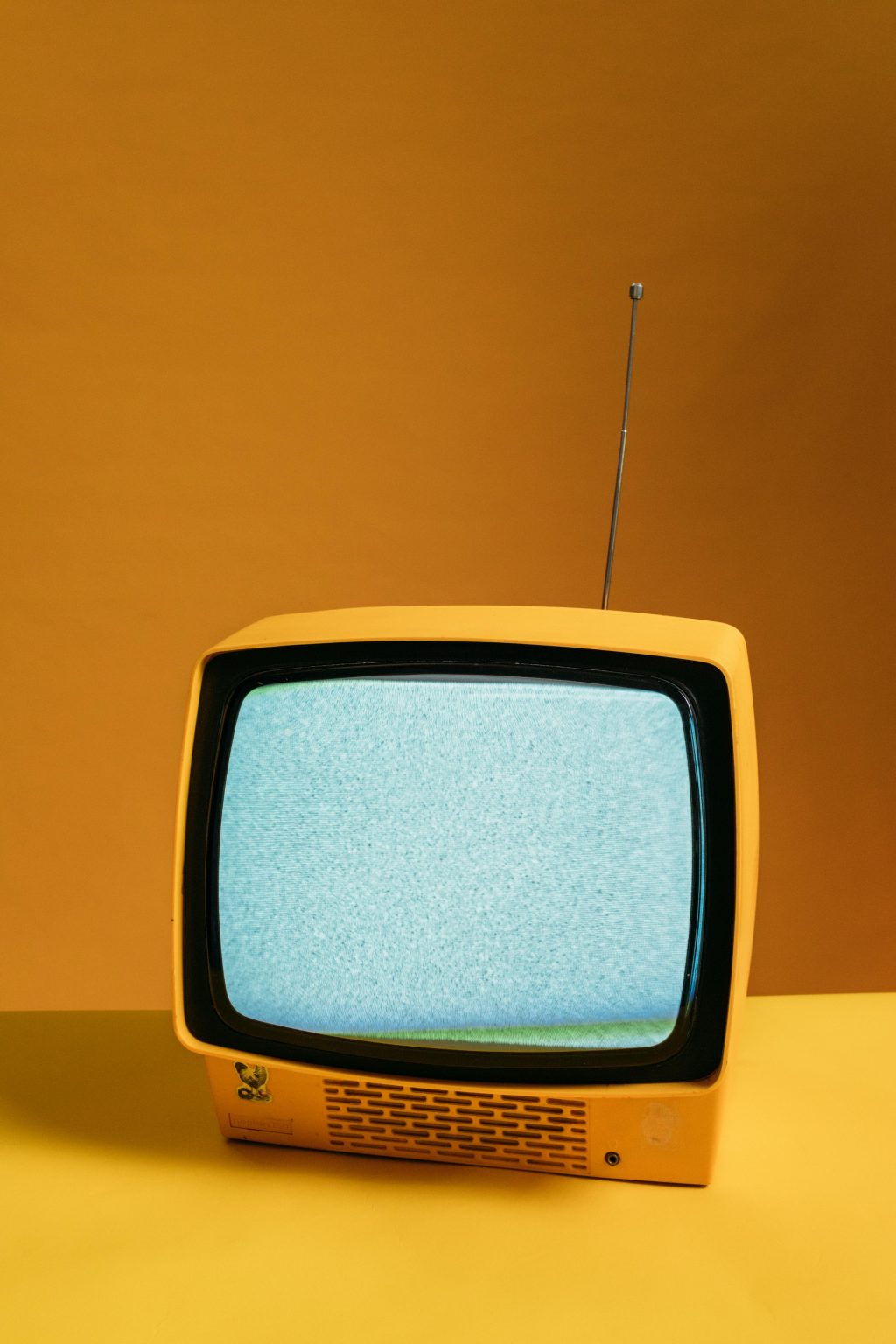It’s hard to believe that broadcasting in the UK is barely 100 years old – the first sustained radio transmissions in this country were made by the BBC in 1922. But here we are just a century later, and it’s hard to imagine the world without radio and television broadcasting, whether it’s for a morning radio show, a live concert or a breaking news event.
In those 100 years, the highly specialised tools used to make these broadcasts have come a long way, from cameras and mixing desks to intercoms and transmission systems. But it’s these tools that form the foundation of every successful broadcast, and we’re going to be taking a closer look at some of the most essential broadcast equipment for TV and radio in today’s blog post.
What is Broadcasting Equipment?
Broadcasting equipment is a broad term that encompasses all the technology you need – including hardware and software – to make television and radio broadcasts. It includes the equipment used in the studio itself, such as cameras, microphones, sound desks, multiviewers and vision mixers, to the equipment that carries your programme to viewers and listeners, such as transmitters, encoders and playout servers. It’s the invisible infrastructure behind every live broadcast, pre-recorded show and radio jingle that’s ever hit the airwaves.
Broadcast equipment for TV and radio differs slightly purely because one requires a visual element, while the other is audio only. But all equipment is essential to the transmission of your service, and it’s important that your chosen tools are reliable. To get the very best setup when building or refurbishing studios and transmission suites, it’s always best to use a trusted broadcasting equipment supplier with a proven track record in delivering the best results.
Types of Broadcasting Equipment
Broadcasting equipment for TV and radio includes everything needed to make TV and radio transmissions possible across a number of categories. While every TV and radio station is different, and technology is always developing and modernising, most stations rely on the same core components to record, manage and deliver their content reliably, both through traditional broadcasting techniques and online streaming capabilities. Typical categories include:
· Capture Tools: At the source of any broadcast, tools such as cameras and microphones are needed for capturing video footage and audio.
· Signal Management: Vision mixers, sound desks, routing switchers and intercom systems are used to coordinate feeds and control each production.
· Processing Units: Audio signal processors (such as compressors and equalisers) and encoders refine and format captured content for broadcast.
· Storage and Playout: Not every show is live, so servers and playout systems are needed for managing pre-recorded content and cueing playback.
· Monitoring: Multiviewers, waveform monitors and vectorscopes are used to monitor and maintain visual and audio quality.
· Transmission Hardware: Satellite uplinks, video encoders and terrestrial transmitters get content to its destination, over the air or online.
· Control Software: Master control, automation systems and media asset management tools help keep your entire operation running smoothly.
From small community radio stations to national TV networks, these technologies form the framework of every single broadcast. Choosing the right mix is critical to quality, consistent output.
The Importance of TV and Radio Broadcasting
Television and radio still connect us like no other medium. From major news events like the passing of Queen Elizabeth II to big sporting fixtures like the Olympics and the World Cup, television and radio bring people together to share moments of joy, sadness and excitement. These platforms remain some of the most accessible and immediate forms of communication, reaching into homes, workplaces and even vehicles in real time.
While the smartphone revolution has made this content accessible almost anywhere, traditional broadcasting doesn’t depend on internet access, and many services are “free to air” so they’re not hidden behind paywalls or subscriptions. This is why TV and radio play such a vital role in everything from public safety to cultural life. Whether it’s a morning weather forecast or a drama that captures the public imagination, people rely on broadcast media for shared experiences and trusted info – all made possible by continued advances in quality broadcast equipment for TV and radio.
Studio Equipment for TV Broadcasting
TV studios and production galleries rely on a wide range of technical equipment to manage their transmissions (whether live or pre-recorded), switch between feeds and deliver smooth, high-quality output. Here are just some of the key categories of equipment that help make it all happen:
Broadcast Cameras
Both in television studios and out in the field, television cameras are the backbone of every production, capturing everything from newsreaders delivering the day’s headlines to the nuances of an actor’s performance in a drama, and all in broadcast-grade quality. Getting the right cameras, lenses and pedestals has a major impact on the quality of your finished product.
Video Switchers and Mixers
Video switchers and vision mixers are the beating heart of television production, especially in live studio environments. They allow directors to switch between multiple cameras and effects in real time, essentially acting as a real-time broadcast editor. They also offer swathes of effects that allow for overlaid graphics, transitions and chroma keying (green screening) among other features.
Monitoring & Quality Control
Waveform monitors, vectorscopes and signal analysers are essential in ensuring your video levels and colour integrity are as good as they can be. These quality control tools help identify and correct many technical issues before your content hits the air, protecting output quality and compliance.
Intercom Systems
Everybody involved in a production needs to be able to communicate, whether it’s a director calling for camera shots in a studio production or a producer feeding information to a presenter while a show is ongoing. Lighting staff, floor managers and everybody else involved need to be able to hear what’s happening to keep the show rolling and professional.
Multiviewers
Multiviewers let directors monitor multiple video inputs on one or more screens simultaneously – think of multiple feeds coming into a control room for a major news story or sporting event as an example. They’re crucial for live shows, enabling a clear view of all incoming feeds and helping production teams make quick, informed decisions in the control room.
Transmission Tools
Transmission starts with video encoders, which compress the raw feed into a suitable format. Modulators and transmitters then push the signal out, whether that’s through satellite, terrestrial networks or digital platforms. The right equipment ensures reliable, high-quality delivery to viewers.
Editing and Automation Software
Non-linear editing tools like Adobe Premiere or Avid are standard for post-production. Automation software manages playout and schedules, while newsroom systems handle script updates, teleprompters and live changes. Together, they streamline studio operations from content to air.
Radio Station Broadcast Equipment
Behind every great radio show is a suite of equipment delivering crystal-clear audio to listeners. From live DJs to rolling news coverage, radio broadcasting relies on robust, purpose-built tools that operate around the clock. Here are five key equipment categories that keep radio stations on the air:
Audio Consoles and Mixers
The heart of any radio show is the mixing console, often operated by the DJ or presenter themselves. These desks balance studio microphones, music, jingles, phone-ins and other audio sources, with precision control over technical aspects like gain, EQ, routing and faders.
Microphones and Accessories
You don’t need us to tell you that your radio station won’t get far without microphones. High-quality broadcast microphones, often mounted on adjustable arms, are chosen for their clarity, tone and reliability. Pop filters, shock mounts and headphone monitors help deliver the best quality sound.
Studio Automation and Playout Software
Modern radio stations often rely on playout systems and scheduling software to automate music, ads and jingles. Some local stations are networked for much of the day, only breaking into local live shows for breakfast and drive time shows. Whether live or pre-recorded, automation and opt-out/opt-in source switching keep output consistent, responsive and professional.
Signal Processing and Audio Quality
Processors and audio enhancers, like limiters, compressors and audio processors, help refine the broadcast signal. They maintain consistent volume levels, eliminate distortion and optimise sound quality for FM, DAB or online streaming.
Transmission Equipment
From transmitters and antennas to STL (Studio Transmitter Links), this vital kit delivers your audio signal to the public. Whether it’s a local FM loop or a national digital stream, reliable transmission hardware is essential for reach and clarity.
Final Thoughts
We hope this blog post lifted the lid on the sheer variety of broadcast equipment for TV and radio that’s available. Whether you’re an enthusiast or are looking to build your own service, it’s vital to ensure you get the right mix of equipment and that all your systems work seamlessly together. Engage with an expert, and you’ll end up with a quality setup that allows you to spend more time focusing on quality content rather than troubleshooting hardware and software.



